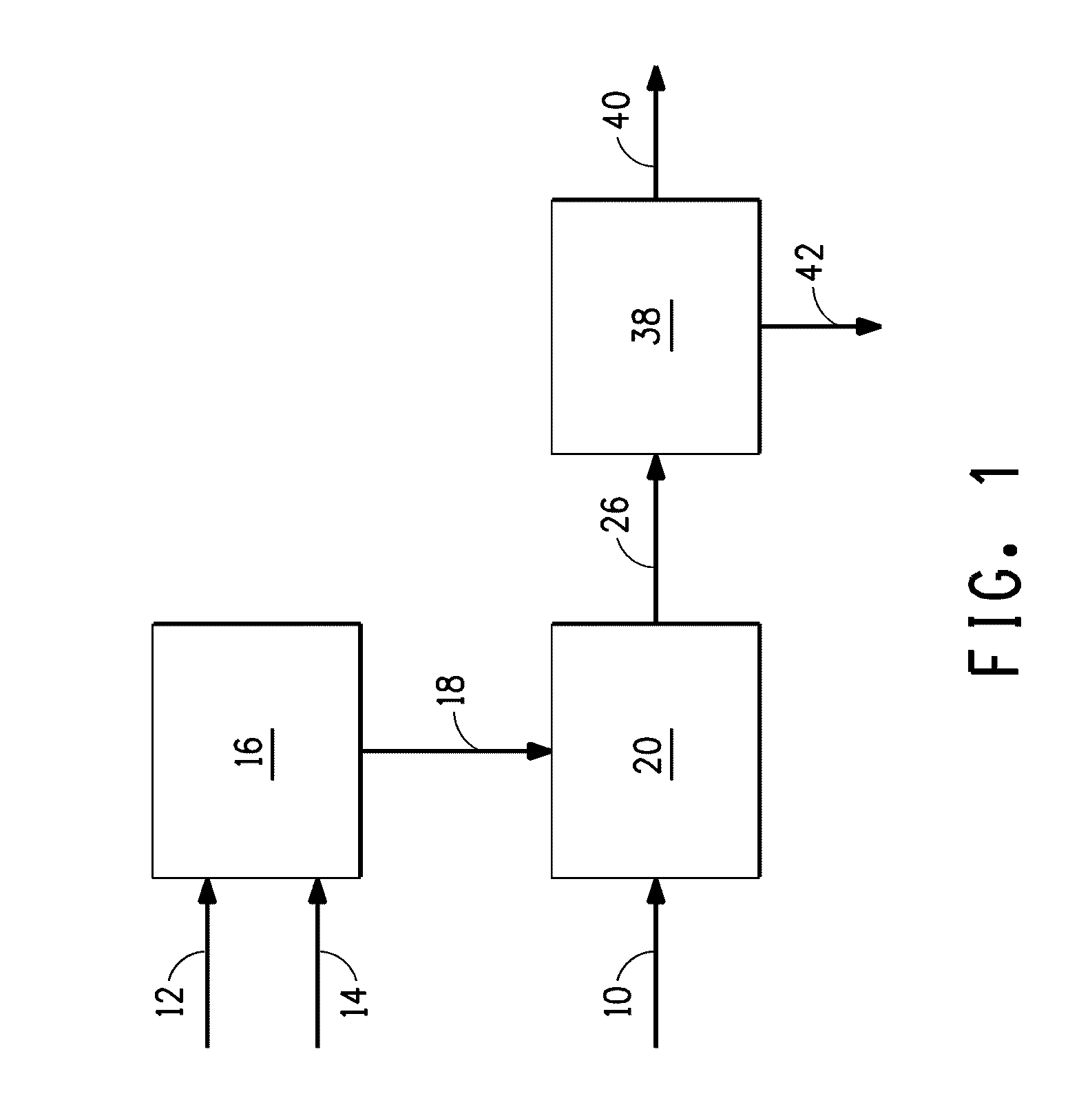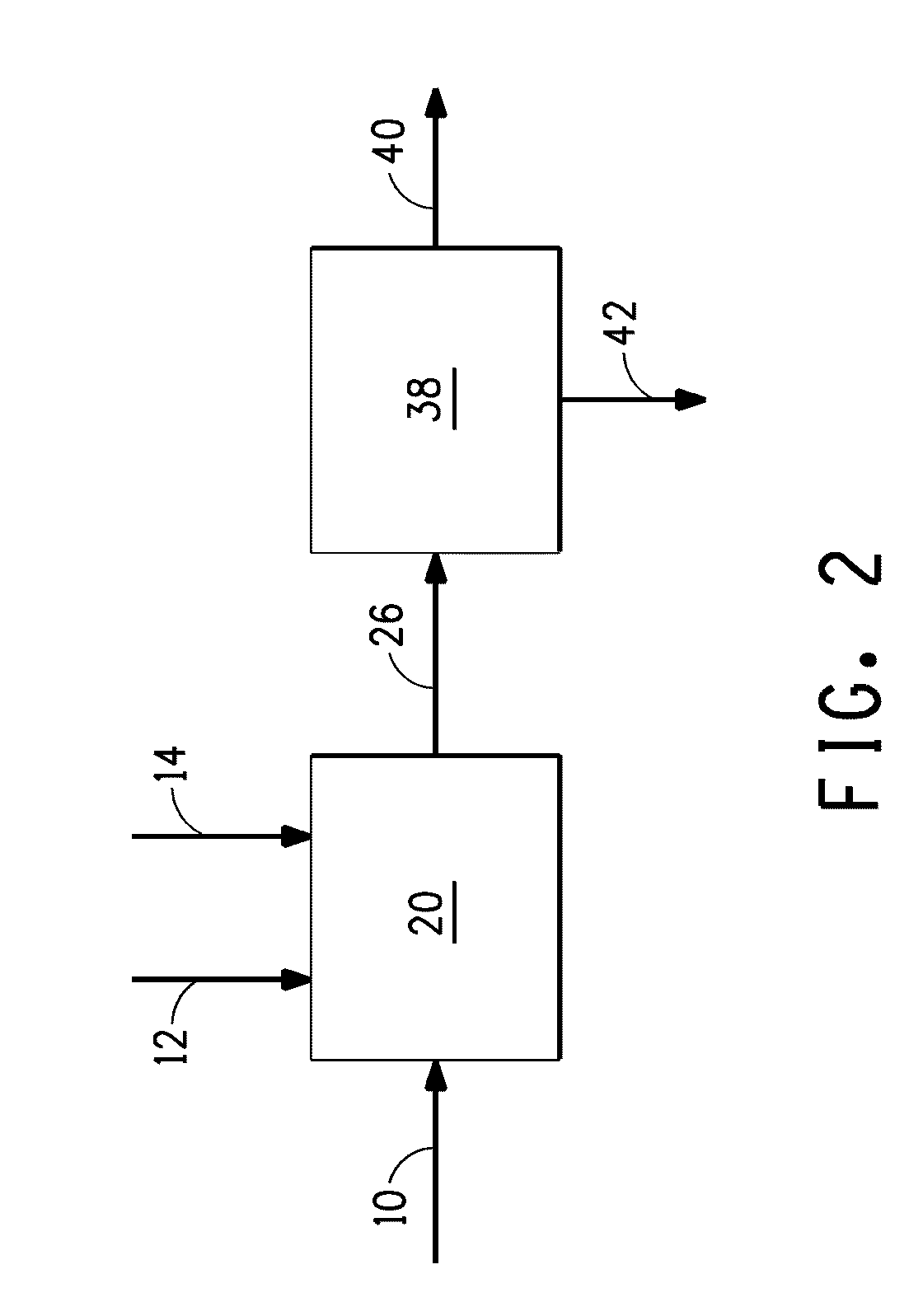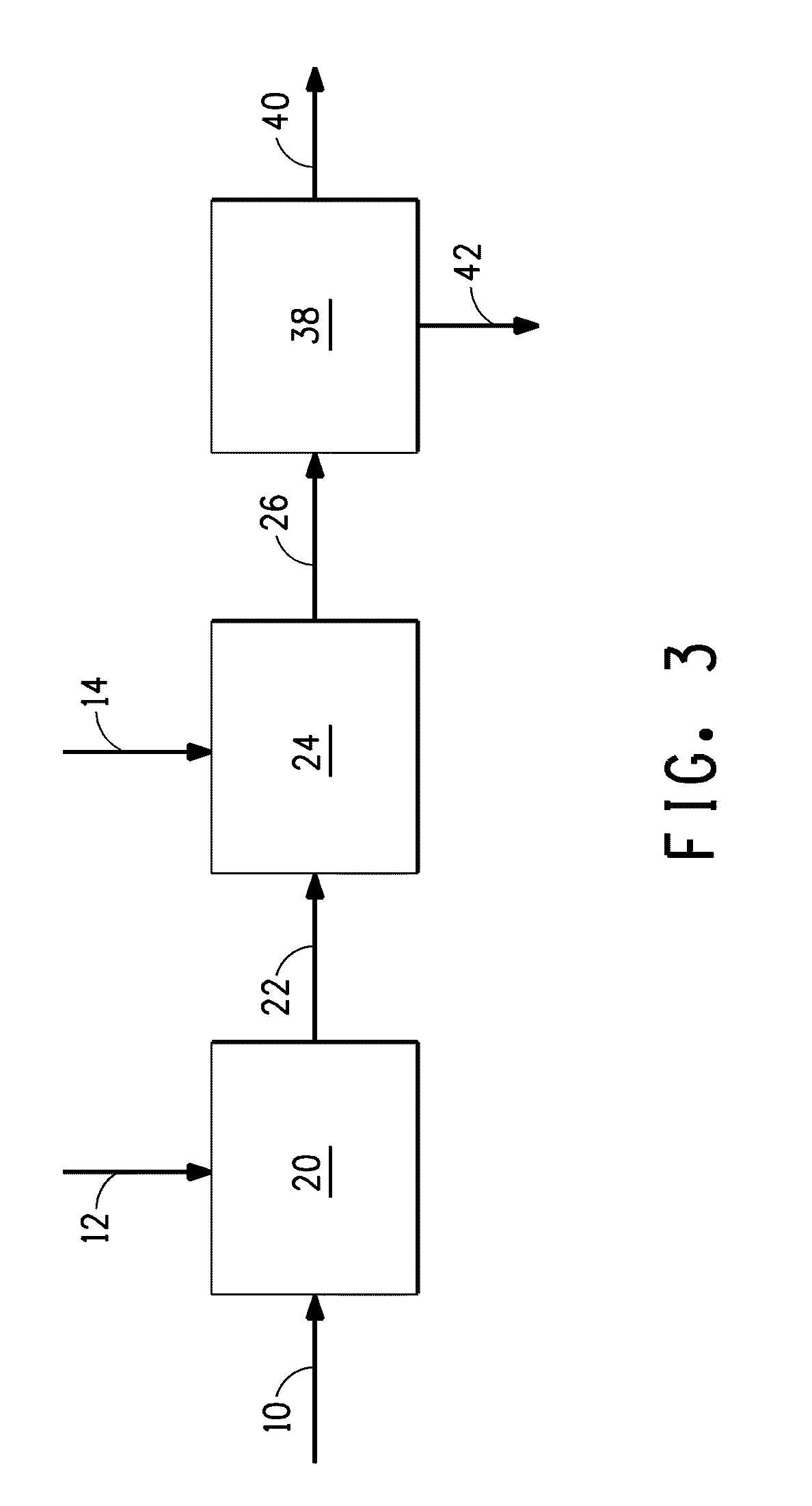Method for producing butanol using extractive fermentation
a technology of extractive fermentation and butanol, which is applied in the field of biofuels, can solve the problems of limited biological production of butanol, high cost and environmental protection, and the method of producing butanol uses starting materials derived from petrochemicals
- Summary
- Abstract
- Description
- Claims
- Application Information
AI Technical Summary
Benefits of technology
Problems solved by technology
Method used
Image
Examples
examples
[0252]The present invention is further defined in the following examples. It should be understood that these examples, while indicating preferred embodiments of the invention, are given by way of illustration only. From the above discussion and these examples, one skilled in the art can ascertain the essential characteristics of this invention, and without departing from the spirit and scope thereof, can make various changes and modifications of the invention to adapt it to various uses and conditions.
Materials
[0253]The following materials were used in the examples. All commercial reagents were used as received.
[0254]All solvents were obtained from Sigma-Aldrich (St. Louis, Mo.) and were used without further purification. The oleyl alcohol used was technical grade, which contained a mixture of oleyl alcohol (65%) and higher and lower fatty alcohols. The purity of the other solvents used was as follows: 1-nonanol, 98%; 1-decanol, 98%; 1-undecanol, 98%; 2-undecanol, 98%; dodecanol, 98...
examples 1-15
Screening of Extractants Comprising a First and a Second Solvent
[0274]The extractants listed in Table 2 were evaluated using the procedure described above, but with the following modifications. After the culture broth was divided into 125 mL flasks, each containing 75 mL of the culture broth, oleyl alcohol was added as the first solvent to each flask in the amount shown in Table 2. After one hour of incubation at 30° C. with shaking at 200 rpm, the corresponding second solvent, as indicated in Table 2, was added to each flask to complete formation of the extractant, followed by addition of 3.75 mL of isobutanol in order to bring the initial isobutanol concentration in the aqueous phase to 40 g / L. From this point on, the additional incubation, work-up, and measurements were done as described above.
TABLE 2Composition of Extractants Used in Examples 1-15Extractant CompositionFirst SolventSecond SolventExampleNamemLVol %*NamemLVol %*1oleyl alcohol17.5701-nonanol7.5302oleyl alcohol12.550...
PUM
| Property | Measurement | Unit |
|---|---|---|
| Fraction | aaaaa | aaaaa |
| Fraction | aaaaa | aaaaa |
| Fraction | aaaaa | aaaaa |
Abstract
Description
Claims
Application Information
 Login to View More
Login to View More - Generate Ideas
- Intellectual Property
- Life Sciences
- Materials
- Tech Scout
- Unparalleled Data Quality
- Higher Quality Content
- 60% Fewer Hallucinations
Browse by: Latest US Patents, China's latest patents, Technical Efficacy Thesaurus, Application Domain, Technology Topic, Popular Technical Reports.
© 2025 PatSnap. All rights reserved.Legal|Privacy policy|Modern Slavery Act Transparency Statement|Sitemap|About US| Contact US: help@patsnap.com



